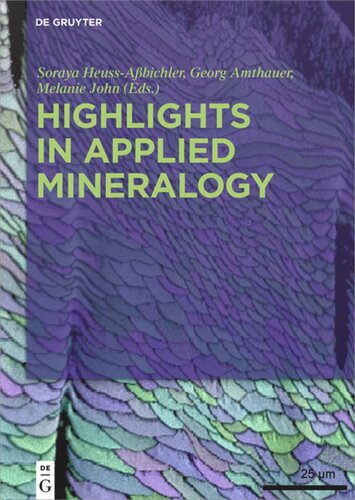

Most ebook files are in PDF format, so you can easily read them using various software such as Foxit Reader or directly on the Google Chrome browser.
Some ebook files are released by publishers in other formats such as .awz, .mobi, .epub, .fb2, etc. You may need to install specific software to read these formats on mobile/PC, such as Calibre.
Please read the tutorial at this link: https://ebookbell.com/faq
We offer FREE conversion to the popular formats you request; however, this may take some time. Therefore, right after payment, please email us, and we will try to provide the service as quickly as possible.
For some exceptional file formats or broken links (if any), please refrain from opening any disputes. Instead, email us first, and we will try to assist within a maximum of 6 hours.
EbookBell Team

4.1
40 reviewsWhat can we learn from nature? The study of the physical, chemical and structural properties of well-known minerals in the geo- and biosphere creates new opportunities for innovative applications in technology, environment or medicine. This book highlights today’s research on outstanding minerals such as garnets used as components in all solid state batteries, delafossite formation during wastewater treatment, monazites for the immobilization of high level radioactive waste or hyroxylapatite as bioactive material for medical implant applications.
Contents
Part I: High-technology materials
Lithium ion–conducting oxide garnets
Olivine-type battery materials
Natural and synthetic zeolites
Microstructure analysis of chalcopyrite-type CuInSe2 and kesterite-type Cu2ZnSnSe4 absorber layers in thin film solar cells
Surface-engineered silica via plasma polymer deposition
Crystallographic symmetry analysis in NiTi shape memory alloys
Part II: Environmental mineralogy
Gold, silver, and copper in the geosphere and anthroposphere: can industrial wastewater act as an anthropogenic resource?
Applied mineralogy for recovery from the accident of Fukushima Daiichi Nuclear Power Station
Phosphates as safe containers for radionuclides
Immobilization of high-level waste calcine (radwaste) in perovskites
Titanate ceramics for high-level nuclear waste immobilization
Part III: Biomineralization, biomimetics, and medical mineralogy
Patterns of mineral organization in carbonate biological hard materials
Sea urchin spines as role models for biological design and integrative structures
Nacre: a biomineral, a natural biomaterial, and a source of bio-inspiration
Hydroxylapatite coatings: applied mineralogy research in the bioceramics field
A procedure to apply spectroscopic techniques in the investigation of silica-bearing industrial materials